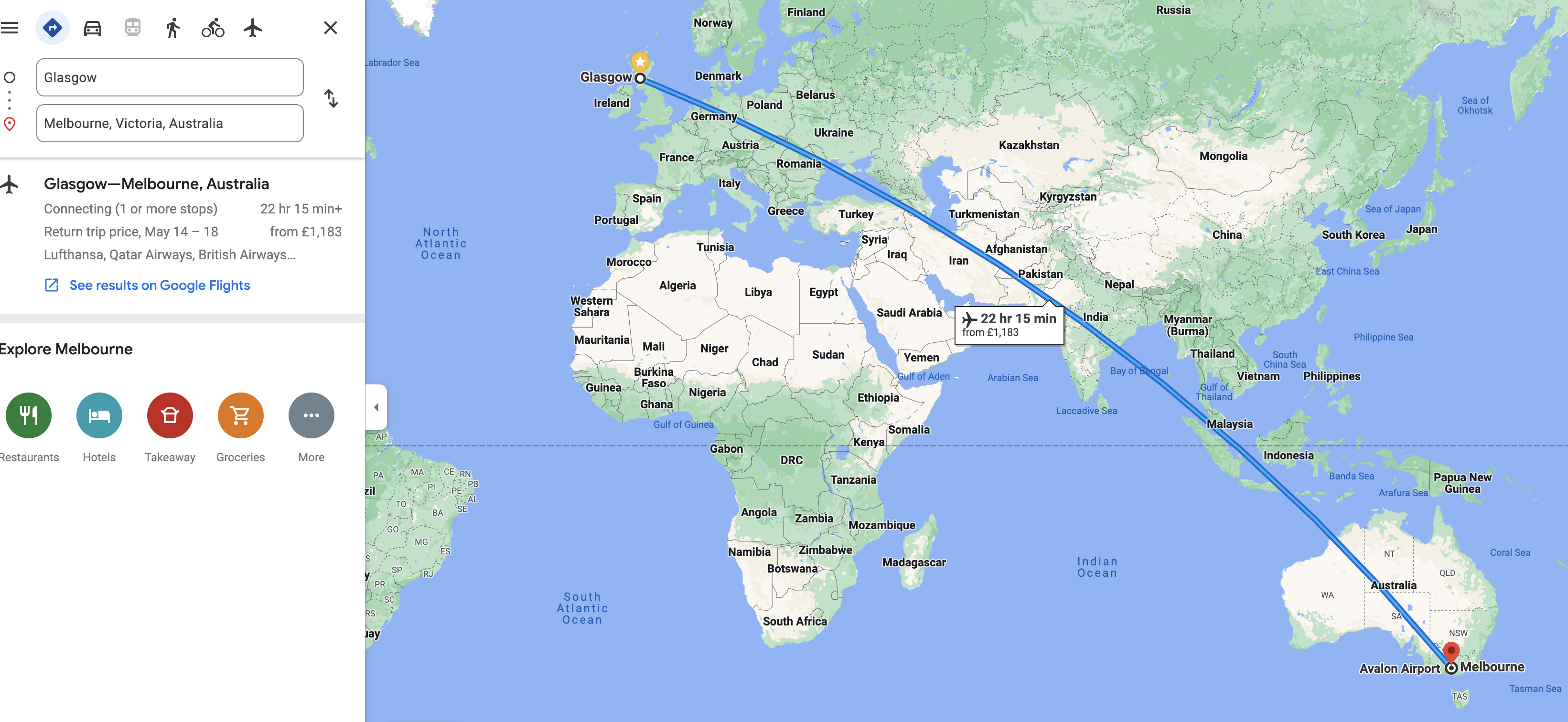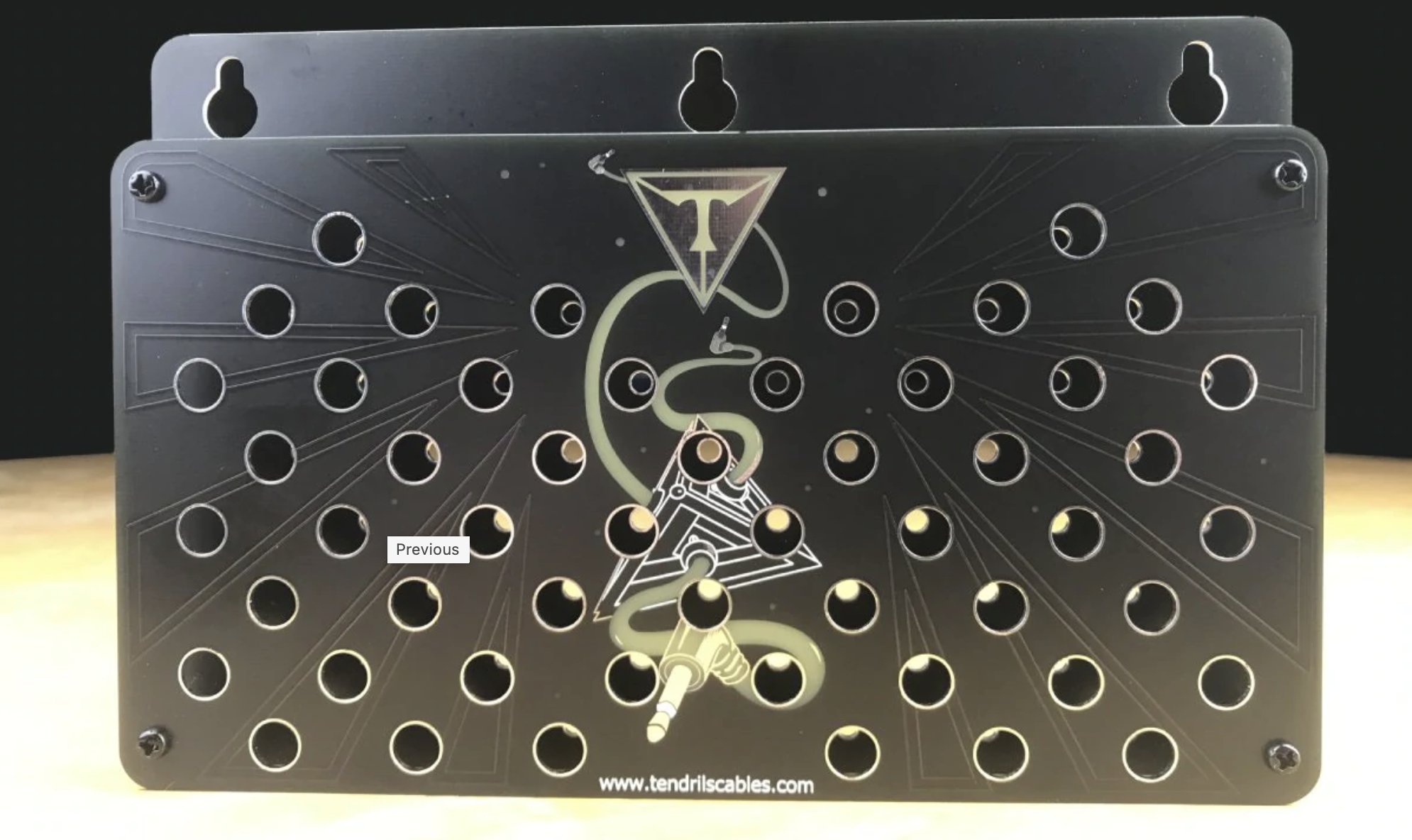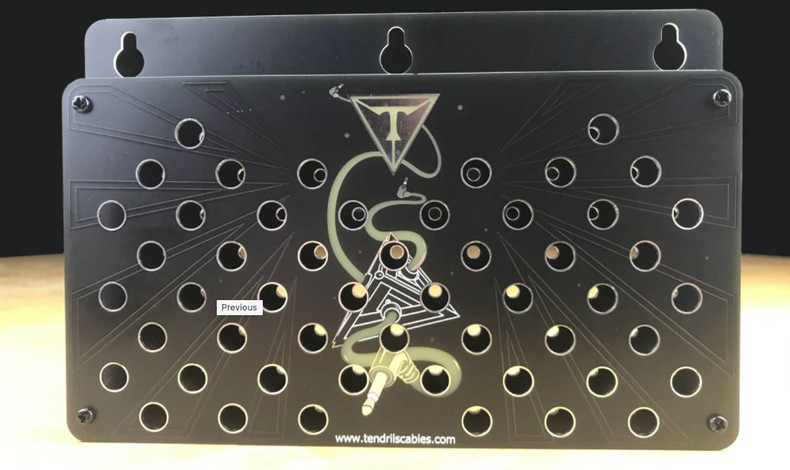Dan Pearson runs the excellent Tendrils Cables company based in Melbourne, Australia. We've been fans of his work for a few years now and thought it was high time that we sat down over a cup of coffee and got the full inside story on Tendrils and some history of the Melbourne music scene from Dan. Unfortunately it's around 17,000km from Glasgow to Melbourne and we thought the coffee would probably be cold by the time we got there, so we had to resort to an old-fashioned email chat instead.

For the interview " JB" is Jason Brunton and "DP" is Dan Pearson.
JB - I'm assuming you've been involved in your local music scene for a while before you started Tendrils? Can you give us some background on how you first got into modular synths or even further back if you were making music before then?
DP - My musical background began as a drummer at age four. I studied jazz and orchestral percussion at school and then started playing drums professionally at 16. During the 90s I spent a lot of time in recording studios doing session work and that's when I started to take an interest in sound engineering, music production, hardware and, most importantly, synthesisers!
My introduction to modular synthesis (apart from software like Reaktor and Nord Modular) was buying a Cwejman S1MK2 in 2010. I then started to piece together a Eurorack system of complementary modules and my interest grew from there.
JB - What kind of music was it that drew you into the electronic sphere? I've never been to Melbourne, but have been to Sydney a few times in the 90s and there was a fair number of European house and techno DJs coming over with occasional visits from Detroit DJs and acts like Underground Resistance. Was it those kinds of acts who sparked an interest or more experimental stuff that you were into?
DP - Melbourne is a very musical city, with a lot of electronic artists and producers and there is a small but active modular community here. Around the time I was getting into electronics, I started going to underground raves and warehouse parties. I wasn't hugely into techno or house music but I soon discovered drum & bass, and being a drummer, that was it for me! I got right into producing beats, chopping up breakbeats, layering and processing bass sounds and programming weird stabs and atmospheric pads. The electronic music scene in Sydney has always generally been a bit more mainstream and techno and house-driven, but Melbourne is a bit grungier, darker and more beat-driven.
JB - We travelled similar paths then. I started out with original Chicago house and Detroit techno music in '88 but by the mid-90s I was travelling down to London regularly for the Metalheadz nights at the Blue Note in Hoxton and taping Fabio & Grooverider radio shows off Kiss FM to take back home to Glasgow.
(By coincidence there is an excellent video of the Blue Note Metalheadz nights from that period which has just made an appearance on YouTube - see link at end of article)
JB - As a bit of a 'gear hound' who also was making music in the 90s, I'm always interested in music hardware from that time. Can you remember what gear you started out with? Were there any particular bits you bought that made you feel like you were king of the hill when you got it?
DP - My first bits of electronic gear were a Roland JV-1080, a Roland SPD-11 multi-pad (with a bunch of additional drum triggers and pedals) and a Lexicon "Jam Man" sampler/looper rack. Indian percussionist Trilok Gurtu was the main inspiration for the Jam Man and I remember how awesome it felt to be able to create layered loops on the fly. I then got hold of a second multi-pad and started performing live electronics solo, usually by triggering drum samples with my feet, basslines and percussion with my left hand and melodies on my right with the multi-pads and JV. That was a lot of fun!

JB - Yeah! Lexicon probably aren't as well known these days as Eventide or even Strymon but in the 90s they did some killer effects boxes and some leftfield stuff like Jam Man that were genuinely affordable and interesting.
I remember plugging in my MPX-1 multi effects for the first time in the mid-90s and almost passing out at the quality of the effects and what they did to my sound compared to what I'd been using before (some basic Zoom stuff and random guitar pedals).
JB - Cwejman is an unusual starting point for a journey into modular, being both high end and relatively rare - how did that come about?
DP - Martin Staaf (Liquid Stranger) put me on to the S1Mk2. I had been hearing these amazing bass sounds in his productions for a while and asked what he was using to make them. He's a very talented and down-to-earth guy who is always willing to share his knowledge and I'm so happy to see he and his Wakaan label are doing so well nowadays. soundcloud.com/liquidstranger
I've always gone for the "less is more" approach in my productions and equipment choices, so it made sense to get a semi-modular that covered a wide range of ground, sonically. I'll admit that they were a lot more affordable back then than they are now, since Wowa's passing!
JB - There's people selling empty Cwejman boxes on Reverb for more than some Eurorack modules cost these days. It's great you had someone like Martin to give you that guidance and share his knowledge. It's something I see a lot of in the Eurorack community too, which is part of its attraction.
JB - Moving forward a little, how did the original idea for Tendrils come about? Was it an organic thing that came about over time or did you have a "Eureka" moment where it came to you fully formed?
DP - As my modular system grew, I became increasingly frustrated with cable clutter, especially in live performance situations as I was always getting my fingers tangled up attempting to reach a certain knob or control quickly.
I started looking into right-angled patch cables and quickly discovered that there weren't a lot of options available. I then spent a while emailing various cable companies asking them if they would consider making them and their reply was generally "Thanks for the suggestion, we'll consider it", but they never came through, so one day I just thought "You know what? I'm gonna do it myself!" and so I began doing research into cable manufacturers and it went from there.
JB - There's a big leap necessary from "I've had an idea" to "I'm going to develop this into a product" to "I'm actually going to get this manufactured and sell it" that most people don't make. Did you have any previous experience that allowed you to make the jump?
DP - I had an interest in product design and branding after studying graphic design at uni, but a pivotal moment was when 1010music invited me to attend the NAMM show in 2017 to help demonstrate their products. Having the opportunity to meet so many musicians, artists and instrument designers/makers was a huge inspiration and provided the push for me to start the brand.
There are so many things involved with setting up a business that I had no idea about when I started and there have definitely been a lot of challenges and hurdles to overcome along the way, but I knew that the cables are making a difference, so that kept me going.
JB - How did the 1010 connection come about? Aaron makes some great stuff and he really nailed the touchscreen thing (it's surprisingly difficult to do right). I'm surprised we didn't meet, I've been at pretty much every NAMM for the last 12 years.
DP - I was an early adopter of their Bitbox sampler module and I started corresponding with Aaron and sharing music that I had been making with it, suggesting features and UI improvements. He was developing the Toolbox sequencer at the time and I offered to produce a promotional video for its release. That turned out well and so I continued doing promotional videos for them and have produced and directed four so far. 1010 Toolbox Video
JB - That's a great story and reminds me again of the direct connection that musicians can make with the creators of their instruments in Eurorack which is something that rarely (or never) happens with more mainstream brands.
JB - In terms of the actual product, as well as the famous right-angled jacks, Tendrils cables are very lightweight - was that intentional or was it a by-product of the high quality cable you chose? Is there anything on a technical level you can share with us about the design and construction? I know from talking to other people who've made cables that short cables are difficult to produce reliably, how were you able to get over that hurdle?
DP - The wire choice came down to what my manufacturer used, and I didn't initially realise how much of an impact using a thinner wire would have, in overall cable density. The factory specialises in cables for medical equipment and have strict quality control and testing, so as a result we have had very few failures or returns in the last four years. It's almost impossible to produce very short patch cables as one of the plugs needs to be able to reach outside of the injection mould to not get crushed.
JB - So, not quite a "happy accident" then? More related to making a choice to go with a high quality manufacturer and having the added benefit of a better product at the end. It feels like the brand isn't standing still and you always want to try new things and make improvements, are you always looking for new ideas and wondering if you can do something that exists in a new "Tendrils" style (I'm thinking of the cable holders here in particular)?

DP - It's great to have a vehicle for exploring, developing and refining cable designs! Recent additions are splitter cables in mono split and stereo breakout versions and seven new colours in the straight cable range. A Mutants (3.5mm to 6.35mm right angled) re-design with new custom moulds and a new right angled 1/4" cable in a range of lengths are coming out soon. We are also working on a stackable cable design which is very exciting.
JB - Yeah, the cable splitters are a great way of easily sending signals to more than one module and they're available in all the usual rainbow of Tendrils colours so they don't mess up your colour coding if you patch in that style.
JB - It's been a pleasure chatting to you as always Dan, look forward to seeing what else you have up your sleeve later in the year.
DP - Good chatting to you, Jason. Big thanks to you, Aleks and the Signal Sounds team for all of your hard work and support distributing our cables to all of our dealers worldwide!
Further reading/watching/listening

